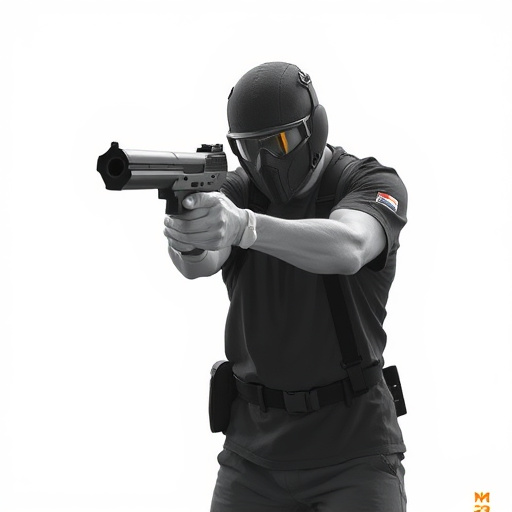Maintain pepper spray between 50°F and 70°F (10°C to 21°C) for optimal preservation of its potency, avoiding extreme temperatures that degrade the active ingredient capsaicin. Store in a cool, dry place below 60% humidity, away from direct sunlight, metal, triggers, and children, with regular inspections for damage to ensure readiness for self-defense.
Discover the power of pepper spray as a personal defense mechanism and learn how to maximize its effectiveness. This article delves into the science behind this non-lethal weapon, exploring critical components like chemical composition and storage conditions. From understanding optimal temperatures for preserving potency to best practices for long-term reliability, you’ll gain insights to ensure your pepper spray remains a reliable deterrent.
- Understanding Pepper Spray's Chemical Composition
- Factors Affecting Optimal Storage Conditions
- Best Practices for Preserving Pepper Spray Effectiveness
Understanding Pepper Spray's Chemical Composition
Pepper spray, a powerful deterrent and self-defense mechanism, is designed to disrupt an attacker’s vision and breathing by targeting the eyes, nose, and respiratory system. Its primary active ingredient is capsaicin, a chemical compound derived from chili peppers. This compound is known for its intense irritation properties, causing temporary but significant discomfort. Understanding the chemical composition of pepper spray is crucial when it comes to its storage and effectiveness.
The best storage temperature for pepper spray is typically between 50°F and 70°F (10°C to 21°C). Exposing pepper spray to extreme temperatures can affect its potency and shelf life. Higher temperatures may cause the capsaicin to degrade faster, reducing the spray’s effectiveness over time. Conversely, cold temperatures can also impact the spray’s performance, as condensation or freezing might occur inside the container, leading to potential blockages. Maintaining an optimal storage temperature ensures that pepper spray remains viable and ready for use when needed.
Factors Affecting Optimal Storage Conditions
The optimal storage conditions for pepper spray are crucial to maintaining its effectiveness and potency. Several factors, including temperature, humidity, and light exposure, significantly affect its performance. In terms of best storage temperature for pepper spray, a cool and dry environment is ideal. Extreme heat can cause the spray to degrade faster, while excessive moisture may lead to clumping or precipitation of active ingredients, reducing its impact.
To ensure maximum potency, it’s recommended to store pepper spray in a location with a consistent temperature between 50-70°F (10-21°C) and relative humidity levels below 60%. Direct sunlight should be avoided as it can accelerate the breakdown of the spray’s chemical components. Proper storage conditions not only preserve the quality of the pepper spray but also ensure that individuals have access to a reliable self-defense mechanism when needed.
Best Practices for Preserving Pepper Spray Effectiveness
To maintain pepper spray’s effectiveness, proper storage is paramount. The best practice involves keeping it in a cool, dry place, with ideal storage temperatures ranging between 50-70°F (10-21°C). Extreme heat or cold can degrade the active ingredients, reducing the spray’s potency. Additionally, avoid direct sunlight as it can accelerate chemical reactions that diminish the spray’s performance.
When not in use, store pepper spray away from direct contact with metal objects or other potential catalysts that could trigger an accidental discharge. Keep it sealed tightly and out of reach of children or unauthorized individuals. Regularly inspect the spray for any signs of damage or degradation, replacing it promptly if needed, to ensure its readiness when required for self-defense.
Pepper spray, as a powerful personal defense mechanism, relies on its chemical composition and proper storage conditions to maintain effectiveness. By understanding the ideal best storage temperature for pepper spray and adhering to best practices, users can ensure their spray remains potent when needed most. Armed with this knowledge, individuals can confidently protect themselves and navigate potential threats with an effective deterrent.
